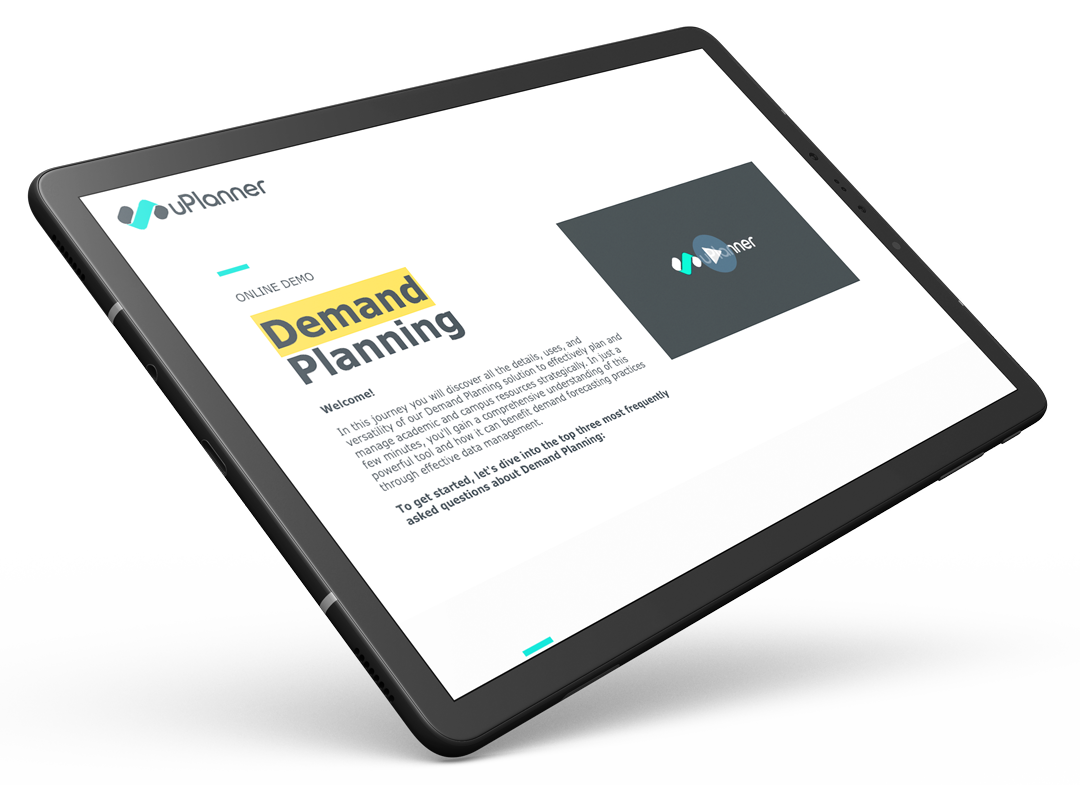What is Demand Planning in Higher Education and Why It Matters Today
Demand planning in higher education refers to the process of forecasting and managing the demand for educational programs, courses, and resources in universities and colleges. It involves analyzing historical data, market trends, student preferences, and other relevant factors to estimate future demand accurately. The goal is to align the available resources and capacities with the expected demand to optimize the student experience, increase enrollment, and enhance operational efficiency.
5 Reasons Why Demand Planning in Higher Education is Crucial Today
- Enrollment Management: Demand planning helps institutions effectively manage their enrollment and admissions processes. By accurately forecasting demand, universities can allocate resources, plan class schedules, and optimize faculty and staff assignments accordingly. It allows them to offer the right programs and courses at the right time to meet student needs and preferences.
- Resource Optimization: Effective demand planning enables universities to allocate resources optimally. This includes determining the number of faculty needed, classroom and infrastructure requirements, and technology and support services necessary to deliver quality education. By aligning resources with demand, institutions can prevent underutilization or overutilization of resources, reducing costs and improving overall operational efficiency.
- Student Success and Experience: Demand planning can contribute to enhancing student success and experience. By offering courses and programs based on anticipated demand, universities can ensure students have access to the subjects they are interested in and progress through their academic journeys smoothly. It helps minimize scheduling conflicts, allows for timely completion of degree requirements, and reduces the likelihood of students encountering barriers in accessing necessary courses.
- Financial Sustainability: Accurate demand planning can support financial sustainability for higher education institutions. By aligning resources with demand, universities can optimize revenue generation. They can avoid overspending on underutilized resources and maximize revenue opportunities by offering popular and in-demand programs. It also helps institutions make informed decisions regarding budgeting, financial aid, and tuition pricing to maintain fiscal stability.
- Strategic Decision-Making: Demand planning provides valuable data and insights for strategic decision-making in higher education. Institutions can use the forecasted demand to identify emerging trends, evaluate the viability of new programs, and assess the potential impact of external factors such as demographic changes or economic conditions. This information helps in long-term planning, resource allocation, and adapting to the evolving needs of students and the job market.
5 Ways uPlanner Improves Demand Planning and Forecasting Processes
uPlanner is a data-driven solution specifically designed to assist with demand planning in higher education. It offers various features and capabilities that can support institutions in effectively managing and forecasting demand.
These are some of the outcomes of using Demand Planning:
- Data Analysis and Forecasting: uPlanner aggregates and analyzes historical data, enrollment trends, student preferences, and other relevant factors to generate accurate demand forecasts. It employs sophisticated algorithms and predictive analytics to provide institutions with insights into future enrollment patterns, program popularity, and resource requirements.
- Resource Optimization: uPlanner helps institutions optimize their resources by aligning them with anticipated demand. It provides tools to model different scenarios, simulate course offerings, and assess resource utilization. This enables universities to determine the optimal number of faculty, classrooms, and support services needed to meet student demand while avoiding over- or underutilization of resources.
- Course Scheduling and Planning: uPlanner offers features for efficient course scheduling and planning. It takes into account factors such as faculty availability, classroom capacity, and student preferences to create optimal class schedules. It also allows for easy adjustment and optimization of schedules based on changing demand or resource constraints, ensuring a smooth and conflict-free registration process for students.
- Collaboration and Communication: uPlanner provides a centralized platform for collaboration and communication among various stakeholders involved in demand planning. It allows faculty, administrators, and advisors to exchange information, share insights, and collaborate on course offerings and resource allocation decisions. This promotes transparency, enhances coordination, and ensures that all relevant parties are involved in the demand planning process.
- Real-Time Monitoring and Adjustments: uPlanner facilitates real-time monitoring of demand trends and enrollment It provides dashboards and reports that allow administrators to track enrollment progress, compare actual data against forecasted demand, and make necessary adjustments in resource allocation or program offerings throughout the academic cycle.
By leveraging the capabilities of uPlanner, higher education institutions can streamline their demand planning processes, optimize resource allocation, improve course scheduling, and make data-driven decisions to meet student needs effectively.




